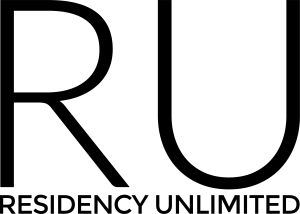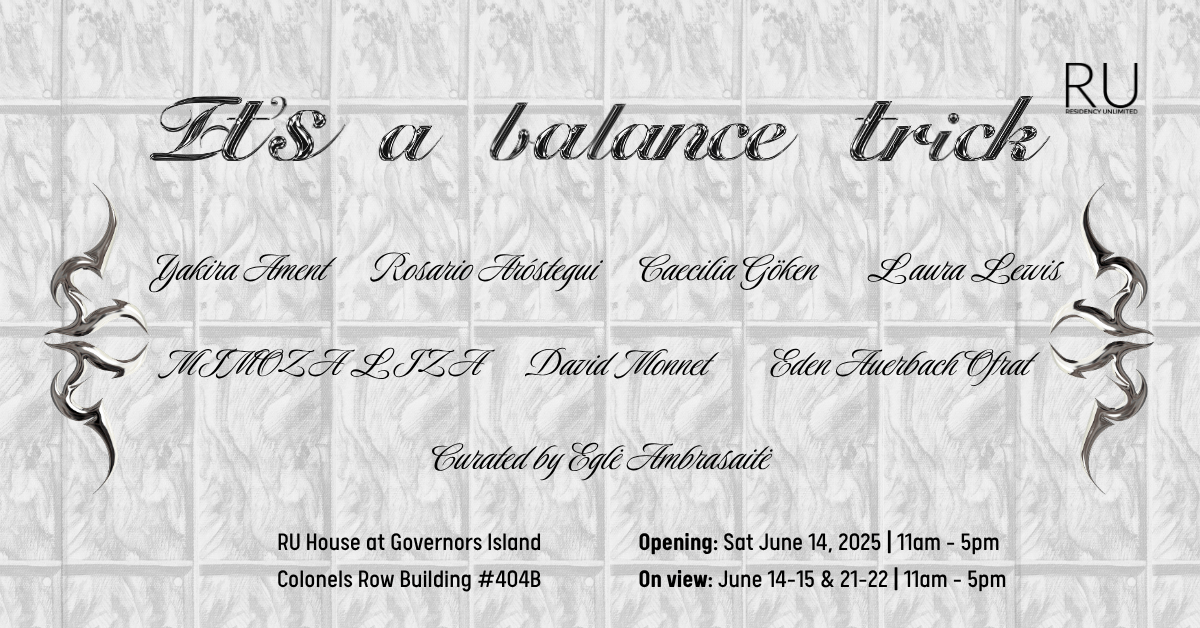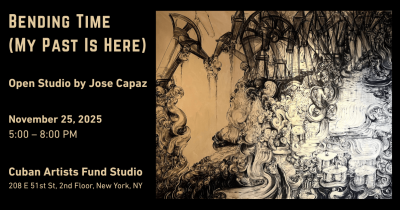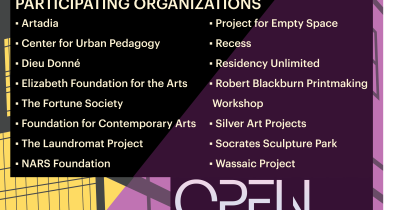Opening: Saturday June 14, 2025 | 11am – 5pm
On view: June 14 – 15 & 21 – 22 | 11am – 5pm
Location: RU House at Colonels Row, Building #404B on Governors Island (map)
Ferry information | Video directions
A group exhibition curated by RU alum Eglė Ambrasaitė, featuring 7 international artists: Yakira Ament, Rosario Aróstegui, Caecilia Goeken, Laura Lewis, MIMOZA LIZA, David Monnet, and Eden Auerbach Ofrat.
“It’s a Balance Trick” approaches the contemporary human condition not as a universal constant, but as a plural, dynamic, and context-dependent area of both vulnerability, inter-dependency and resistance. It serves as a mirror, a critique, and a possible healing space. Following feminist new materialist theories, the group exhibition embraces humans not as autonomous, isolated beings, but as entities that are entangled, relational, and materially embedded within complex ecologies – social, biological, and technological. Accentuating the urge for relationality and intra-action – the new materialist way of understanding balance as a matter of responsible entanglement – the works on view delve into investigations of meaning-making and offer a nuanced account of diverse cultural experiences. Together, they investigate the complexities, anxieties, and paradoxes of what the 21st-century (more-than-)human condition might entail.
MIMOZA LIZA’s sculptural installation functions as a living entity that questions the exuberant ‘just do it’ spirit emblematic of neoliberal ideology. Her work satirically unpacks the cultural fixation on the ‘live fast, die young’ ethos, unsettling these glorified ideals and calling attention to the pressing need for both personal and collective recalibration.
In her (photo)sculptural works, Caecilia Goeken explores the construction of national identities within a saturated visual culture. How is meaning transmitted, received, and held in tension, or in other words, ‘balanced’? Engaging both with Cornelius Castoriadis’s concept of “primal significations” as well as Bourdieu’s theory of social capital, Goeken’s work examines how such imaginaries continue to structure perception and affect exposes the mechanisms through which symbolic power circulates within cultural fields, and contributes to the structuring of meaning and value.
In his practice, David Monnet reflects on enduring Cartesian binaries and, through moments of tension and suspension, invites us to imagine new rhythms for relational balance in daily life. His acrylic paintings are assembled in several binary combinations: smaller canvases depict what might seem to be an insignificant, daily-life object of an electric wire, while the large canvases are non-figurative and distinctively monochrome. Disattaching the symbolic object of power (the cable) from the vast ‘neutral’ colourful emptiness (the source), David creates an eerie visual meditation on contemporary alienation.
Rosario Aróstegui’s sculptural installation traces the entangled threads of cityscapes, human presence, and the living world. Working with found objects and recycled materials, she invites us to reflect on layered temporalities and the enduring interconnection between human infrastructure and (organic) life. Her work blurs the lines between built environments and ecological systems, revealing their mutual dependencies.
Laura Lewis’s conceptual figurative paintings delve into the realms of psychosexuality, psychosomatic tension, and the shifting multiplicities of the self. Through a visceral, expressive use of paint, Lewis explores vulnerability and embodiment, evoking the psychological intimacy of Ingmar Bergman’s Persona. Her works interrogate how individual psyches are inscribed within the body and shaped by systems of collective consciousness.
Eden Auerbach Ofrat’s video works are autoethnographic recreations of three interwoven myths: the Bugonian myth in which a cow’s corpse begets a swarm of bees; the Egyptian myth of Hathor, goddess of fertility and femininity; and the artists’ personal myth, in which a giant bull sculpture is set ablaze. Together, these films function as a spiritual journey through the cycles of (feminine) death and rebirth. Ofrat questions the figure of the (female) savior and whether the bearer of light is inherently a source of illumination – probing the ambivalent nature of transcendence and power.
Yakira Ament’s intimate, delicate yet resilient sculptures and drawings act as sacred portals into cosmic relationality. Merging together elemental forces – air, water, fire, and earth – her ethereal forms explore the deep interconnection between bodies, emotions, and environments. Traversing cycles of birth, decay, and renewal, Ament’s work dissolves boundaries between nature and culture, animal and human – offering us the paths to explore more-than-human connectivity – a harmonic multi-species entanglement – both personally and collectively.
Click above to see the images from the program
This program is supported by the Trust for Mutual Understanding, Artis, Canada Council for The Arts, Musikschule Gescher, AVV, ARTS VISUELS VAUD and SERAC, Service des affaires culturelles du Canton de Vaud, The Levin Foundation and Artlinks.

![]()
![]()
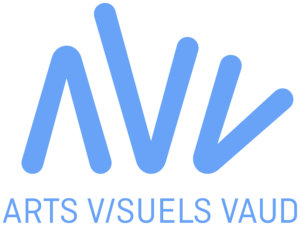
![]()
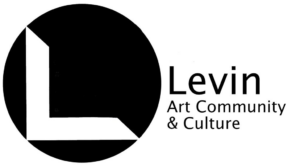
![]()
This program is supported, in part, by public funds from the New York City Department of Cultural Affairs in partnership with the City Council.
![]()
RU is grateful for the partnership with Governors Island Arts.

